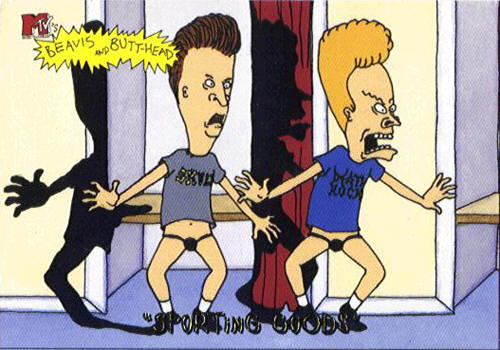
Sigmund Freud (1856-1939)
The Interpretation of Dreams 1900
Contributions to modern thinking and Modernism.
Freud: Key Basic Concepts
Our brains have three levels of consciousness, corresponding with three childhood developmental levels:
1) The Id: this is the "natural" or entirely instinctual brain we are born with, our strictly animal brain, corresponding more or less with what psychologists sometimes call "the reptile brain" (basal ganglia). It's drives the self toward survival, and thus: selfishness, sex and aggression. Rousseau termed this part of our selves amour de soi, or "self love".
This brain is necessary for infants to survive: it is entirely selfish and operates entirely on "the pleasure principle": what feels good is pleasurable because it is necessary to survive; deprived of pleasure or experiencing pain, the infant does whatever is necessary to fill the need: screaming, crying, eating, crapping, nursing breasts, grabbing and getting etc. ...when the child is hungry, the child grabs its mother's -- or any other nearby -- breast.
Instant gratification: the Id (the infant, the toddler) wants its needs (pleasures) gratified instantly, right now! When it isn't fed, it cries. When it doesn't want to put on its snow suit before going out to play, it throws a fit and kicks and screams.
2) The Ego: eventually (c. age three) we learn we are not alone and reality consists of others as well as ourselves (which is to say, we differentiate our minds/bodies from the will/body of those around us). The Id still exists, but it slowly is buried "beneath" the Ego. The Ego will later serve as the moderating force between the Id and Superego.
The ego keeps us in touch with reality (the external world, the world outside of our "selves", and thus, other people as well as our physical reality) and to balance out or control the Id's pleasure principle, Freud says the Ego is gives us "the reality principle". The Ego is often associated with "common sense". If the Ego represses (Frued's metaphoric image of the Ego pressing down on (repression) is important) the Id, it largely does so the way reality confounds our fantasies and deepest desires.
Delayed gratification: unlike the Id, the rational Ego tells us that sometimes we must wait to satisfy our needs: mommy can't bust out her boobs whenever we are hungry; even if we don't want to wear our snow suit now, we'll be glad we have it on later when we're out in the snow.
3) The Superego: As we mature, we are gradually socialized (note Locke's and Rousseau's influence: tabula rasa): society teaches us sets of moral principals thru which, mainly, we learn to live social lives. Freud thinks of this as the "Father Figure" since he lived in a patriarchy, but perhaps think of this as Kindergarten: to progress in our social lives, we must first learn to play nice with others. However, the Id still exists, but now it is buried beneath both the Ego and Superego. (from a neurological perspective, these elements exist in our prefrontal cortex, the last element of our brains to physically and thus cognitively mature)
This "buried" and "beneath" imagery is important to Freud and
explains the term subconscious -- this mind is below consciousness,
buried underneath it, and thus under pressure and trying to escape.
See:
Restraint
As far as this class goes, we are primarily interested in the concept of the Superego repressing the Id because it's this view of society repressing our natural desires that drives so much modern literature (and we should also note how much Freud owes to Rousseau: society corrupts the natural self; however, Freud's natural self (Id) is not inherently good, as it is for Rousseau, and this is a huge difference between Freud's effect on Modernism vs. Rousseau's effect on Romanticism.)
The Hell Of Adolescence
Making matters worse, during adolescence our sex drives kick in and our animal brains (our Ids, fueled by our hormones) tell us that all we really want to do is have sex...with anyone, including ourselves, all the time, wherever:

These drives, these very thoughts, are repressed. Our reptile brains still seek nothing but pleasure, and yet we must repress those drives and emotions in order to remain in our society. We cannot, to put it in Freudian terms, go around grabbing breasts, even though that's what we really want to do. (See: Restraint)
Only to be displaced into other behaviors, some healthy, some quite
damaging (neuroses), and some only in our sleep....

Freud used the Oedipus complex to represent the point at which all these conflicting "consciousness" and drives collide.
What Are Dreams?
From The Interpretations Of Dreams, Freud, 1900
Dreams are "psychological phenomena of complete validity -- the fulfillment of wishes..." (2198)
"What is the source of material that has been modified to into the dream?": Id drives pushed back into the unconscious by the Superego.
"Can a dream tell us anything new about our internal psychical process [Locke's "reflection"]?" Freud deduces that the dream "language" is evidence of how our brains function. This dream language is told in symbols. (Tom's note: this is a classic deductive error: circular argument; he never really provides any factual evidence either of these exists)
"Can its content correct opinions we have held during the day?" Freud's initial, primary concern is curing neurosis or mental disease. He believes we must confront our repressed ideas and emotions -- our dream wishes -- in order to become mentally healthy, but in order to do so, we must first identify them: reading our symbolic dream language is the primary means of doing so.
The meaning of a dream is displaced: it is not one-to-one or obvious; our minds protect themselves from the idea or meaning's "intensity". ("The truth? You can't handle the truth!" -- Jack Nicholson, A Few Good Men) This is why the meaning of a dream is in its symbols.
Because the Id's primary drives are sex and aggression, and because the Superego and society primarily govern, regulate sexual and aggressive behavior, our "dream-wishes" and thus our dreams, are largely sexual and violent.
I mean yours are...mine are just really pointless and weird.
How do we know when a dream image is an actual meaningful symbol vs. random crap. Repetition. If you dream about a bear now and then, you're probably afraid of bears, but if you repeatedly dream about bears, those aren't bears; those are "bears". Dreamed about spelunking into a cave once? No problemo. Haunted by spelunking? You got issues, my friend.
Freudian thought in Heart of Darkness:
A) Marlowe's story is delivered in this "displaced" fashion
and the entire story has a hazy, dream-like quality to it. See:
Impressionism
B) Conrad styles Heart Of Darkness like a dream; it's actual, deeper meaning is transferred through symbolism.
C) How do we know what images are symbols? They are repeated over and over again. And again. Repeated. Again.
“The yarns of seamen have a direct simplicity, the whole of the meaning of which lies within the shell of a cracked nut. Marlow was not typical, and to him the meaning of an episode was not inside like a kernel but outside, enveloping the tale which brought it out only as a glow brings out a haze, in the likeness of one of these misty halos that sometimes are made visible by the spectral illumination of moonshine.” (9) (1493).
"One gets some sometimes such a flash of insight. The essentials of this affair lay deep under the surface, beyond my reach and beyond my power of meddling.” (40)
"Do you see the story? Do you see anything? It seems to me I am trying to tell you a dream-- making a vain attempt, because no relation of a dream can convey the dream-sensation, that commingling of absurdity, surprise, and bewilderment in a tremor of struggling revolt, that notion of being captured by the incredible which is of the very essence of dreams..." He was silent for a while. "...no, it is impossible; it is impossible to convey the life-sensation of any given epoch of one's existence -- that which makes it truth, its meaning -- its subtle and penetrating essence. It is impossible. We live, as we dream, -- alone." (1511)
"'Going up that river was like traveling back to the earliest beginnings of the world, when vegetation rioted and the big trees were kings. An empty stream, a great silence, an impenetrable forest. The air was warm, thick, heavy, sluggish. There was no joy in the brilliance of the sunshine. ...the waterway ran on into the gloom of overshadowed distance. ... There were moments when one's past came back to one...but it came in the shape of an un-restful and noisy dream, remembered with wonder amongst the overwhelming realities of this strange world of plants, and water, and silence. ... It was the stillness of an implacable force brooding over an inscrutable intention. ... I had to discern, mostly by inspiration, the signs of hidden banks; I watched for sunken stones.... ... I had to keep a look-out for the signs of dead wood.... When you have to attend to things of that sort, to the mere incidents of the surface, the reality -- the reality, I tell you -- fades. The inner truth is hidden -- luckily, luckily. But I felt it all the same; I felt often the mysterious stillness watching over me at my monkey tricks, just as it watches you fellows performing on your respective tight-ropes for -- what is it? half-a-crown a tumble [a reference to the price of hiring a prostitute]------'
'Try to be civil, Marlow,' growled voice, and I knew there was at least one listener awake besides myself.'" (1516-17)
C) Note relationship of Kurtz to Id. Note displacement and
perversion of Id in Brussels into hypocritical/false Superego language. See:
Restraint
Also see: Freudian Theory and Western Thought and Culture, Art